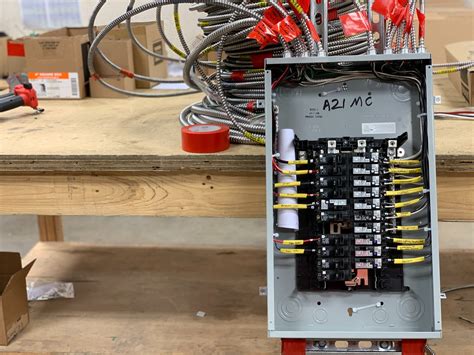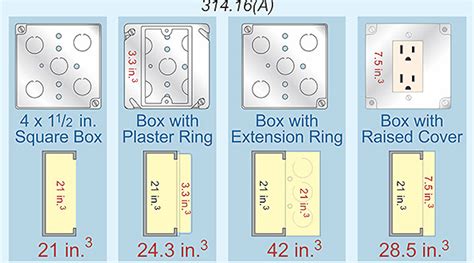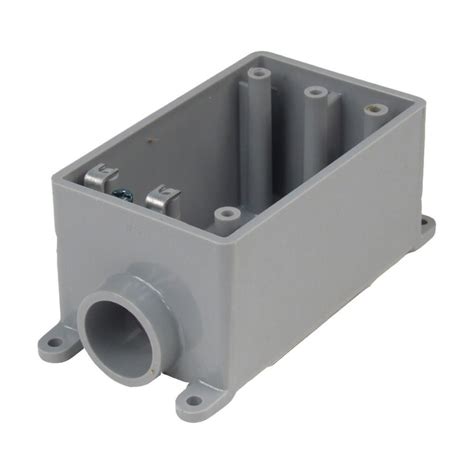electrical boxes voltage size 🙋 In this junction box calculator, we refer to the specifications provided by the National Fire Protection Association® (NFPA®) in the NFPA 70: National Electrical Code® 2020 (2020 NEC®) Article 314.28 Pull and Junction Boxes and Conduit Bodies.
Metal tortoises should be installed in the north or northwest direction. When placed in the north direction, it brings good luck in the lives of children and enhances their concentration. Additionally, placing the tortoise in the North-West direction of their room will help sharpen their mind.Choose a location for your junction box that is easily accessible and complies with local electrical codes. The box should be mounted securely to a stud or joist, with its face flush to the wall surface. For exterior installations, .
0 · types of electrical panel boxes
1 · standard electrical box sizes
2 · size of electrical outlet box
3 · exterior electrical boxes types
4 · electrical box size charts
5 · dimensions of electrical outlet box
6 · dimensions of an outlet box
7 · different types of electrical boxes
In 1.10 they added a bunch of small islands in between the prison and coast. They also added a dock on the west side of the island. First I thought that a mountain backpack, or a field backpack would do it, but the metal sheet requires 10x10 slots, and: - mountain backpack has 10x8. - field backpack has 10x9.
Wires, receptacles and switches need adequate space. Crowded boxes can damage wires, resulting in a fire or shock hazard. You can use the chart below to calculate the required box size. Add up the numbers for the correspond- ing components in the box to find . Use 314.28 (A) to size pull boxes, junction boxes, and conduit bodies when using conductor sizes 4 AWG and larger. Suppose you have a 2-inch raceway coming into a 10-inch square box, and a 2-inch raceway leaves . 🙋 In this junction box calculator, we refer to the specifications provided by the National Fire Protection Association® (NFPA®) in the NFPA 70: National Electrical Code® 2020 (2020 NEC®) Article 314.28 Pull and Junction . Wires, receptacles and switches need adequate space. Crowded boxes can damage wires, resulting in a fire or shock hazard. You can use the chart below to calculate the required box size. Add up the numbers for the correspond- ing components in the box to find how many cubic inches you’ll need.
Use 314.28 (A) to size pull boxes, junction boxes, and conduit bodies when using conductor sizes 4 AWG and larger. Suppose you have a 2-inch raceway coming into a 10-inch square box, and a 2-inch raceway leaves it on the opposite side. 🙋 In this junction box calculator, we refer to the specifications provided by the National Fire Protection Association® (NFPA®) in the NFPA 70: National Electrical Code® 2020 (2020 NEC®) Article 314.28 Pull and Junction Boxes and Conduit Bodies.An electrical box, often referred to as a junction box, is a container that houses electrical connections and wiring. These boxes protect electrical connections from environmental factors and accidental damage, ensuring safety and compliance with electrical codes.Here we describe matching 15-Amp receptacles to 15-Amp circuits, 20-Amp receptacles to 20-Amp circuits, two-wire receptacles where no ground is present, GFCI and AFCI electrical receptacles, and the proper electrical box to hold and mount these devices.
You must size pull boxes, junction boxes, and conduit bodies large enough so a crew can install the conductors without damaging them. For conductors 4 AWG and larger, you size pull boxes, junction boxes, and conduit bodies per Sec. 314.28.Electrical boxes come in many shapes, sizes and materials. In many cases, there are several correct options, each with advantages, disadvantages, and costs to consider. This article will cover the most common boxes used by low-voltage electricians. Electrical boxes encase wire connections to protect them from short circuits. They are vital for fire safety and are used for receptacles, ceiling fans, outside outlets, and more. Unless the device is one of the few that contains its own wires, it likely will need an electrical box.
There is a huge selection of electrical boxes, varying by size, shape, mounting device, and composition. One of the first distinctions to note is that of new work boxes and remodel or cut-in boxes. I am laying out an installation of 3-conductor, shielded, 5kv cables (2.15-inch O.D. over sheath), and need to size pull boxes. According to 314.71(A), for straight pulls, the min. length of a PB is 48 x the cable diameter. Wires, receptacles and switches need adequate space. Crowded boxes can damage wires, resulting in a fire or shock hazard. You can use the chart below to calculate the required box size. Add up the numbers for the correspond- ing components in the box to find how many cubic inches you’ll need.
Use 314.28 (A) to size pull boxes, junction boxes, and conduit bodies when using conductor sizes 4 AWG and larger. Suppose you have a 2-inch raceway coming into a 10-inch square box, and a 2-inch raceway leaves it on the opposite side. 🙋 In this junction box calculator, we refer to the specifications provided by the National Fire Protection Association® (NFPA®) in the NFPA 70: National Electrical Code® 2020 (2020 NEC®) Article 314.28 Pull and Junction Boxes and Conduit Bodies.An electrical box, often referred to as a junction box, is a container that houses electrical connections and wiring. These boxes protect electrical connections from environmental factors and accidental damage, ensuring safety and compliance with electrical codes.Here we describe matching 15-Amp receptacles to 15-Amp circuits, 20-Amp receptacles to 20-Amp circuits, two-wire receptacles where no ground is present, GFCI and AFCI electrical receptacles, and the proper electrical box to hold and mount these devices.

types of electrical panel boxes
You must size pull boxes, junction boxes, and conduit bodies large enough so a crew can install the conductors without damaging them. For conductors 4 AWG and larger, you size pull boxes, junction boxes, and conduit bodies per Sec. 314.28.Electrical boxes come in many shapes, sizes and materials. In many cases, there are several correct options, each with advantages, disadvantages, and costs to consider. This article will cover the most common boxes used by low-voltage electricians. Electrical boxes encase wire connections to protect them from short circuits. They are vital for fire safety and are used for receptacles, ceiling fans, outside outlets, and more. Unless the device is one of the few that contains its own wires, it likely will need an electrical box.There is a huge selection of electrical boxes, varying by size, shape, mounting device, and composition. One of the first distinctions to note is that of new work boxes and remodel or cut-in boxes.


cut in box for data & electrical tv

standard electrical box sizes
$30.95
electrical boxes voltage size|types of electrical panel boxes